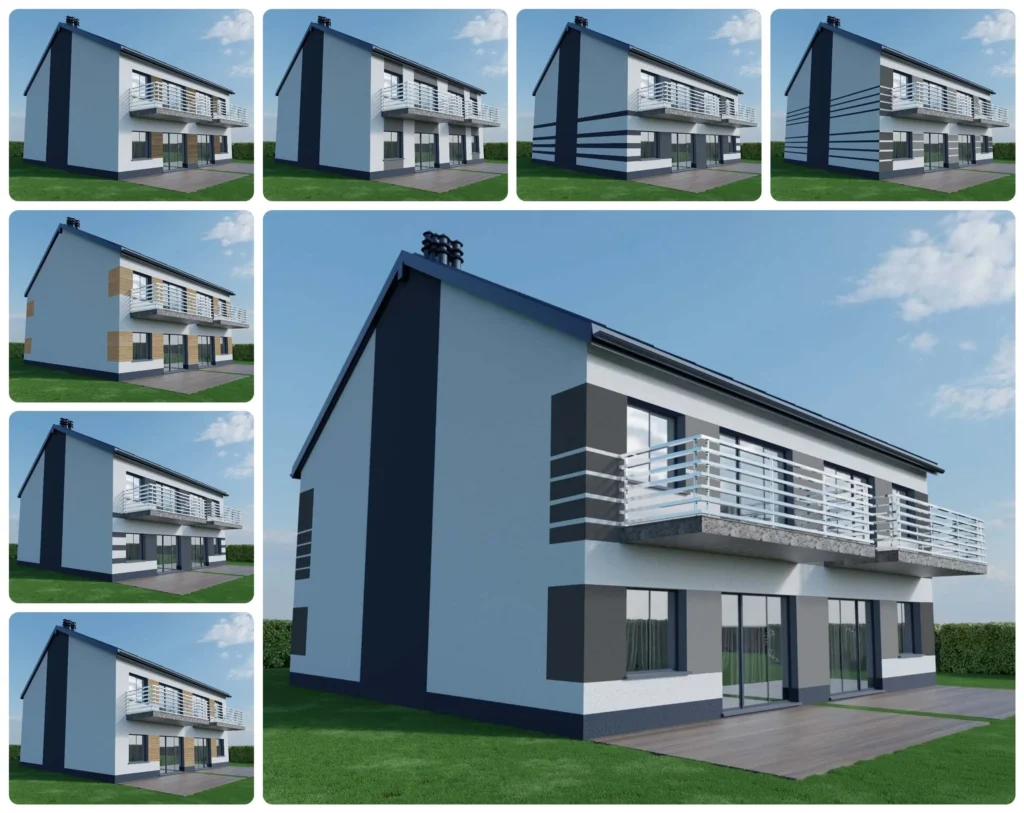
The world of residential design has been revolutionized by technology, and at the forefront of this transformation is the 3D house elevation rendering project. This innovative approach allows architects, builders, and homeowners to visualize the exterior projekt elewacja domu of a home with striking realism—long before a single brick is laid. By combining architectural expertise with advanced rendering software, these projects turn concepts into vivid, interactive experiences.
What is 3D House Elevation Rendering?
3D house elevation rendering is the process of creating detailed, lifelike digital representations of a home’s exterior design. It includes accurate textures, lighting, materials, colors, landscaping, and environmental elements to produce a photo-realistic preview of the final result. Unlike traditional 2D blueprints, 3D renderings provide a dynamic perspective, making it easier to understand the shape, scale, and visual impact of the proposed elevation.
Benefits of 3D Rendering in House Elevation Projects
One of the biggest advantages of 3D rendering is enhanced communication. It bridges the gap between architects and clients, allowing everyone involved to share a clear vision. Clients can view their home from multiple angles, request real-time changes to colors or materials, and make informed decisions with confidence.
Another major benefit is cost and time efficiency. Design flaws and mismatches in materials can be detected early in the rendering phase, avoiding costly changes during construction. Clients can also experiment with different elevation styles—modern, traditional, rustic, or contemporary—without physical trials, simply by swapping textures, colors, or layout elements digitally.
Key Features of a 3D Elevation Rendering Project
Realistic Textures: Brick, wood, stone, metal, and glass are all accurately represented to reflect how they will look in natural light.
Lighting Effects: Day and night views, sun orientation, and artificial lighting help assess how the elevation will appear under different conditions.
Landscaping Integration: Gardens, driveways, pathways, and external features like pools or decks are included to give a full visual context.
Multiple Views: Front, rear, and side elevations can all be rendered, allowing a 360-degree understanding of the home’s exterior.
Applications in Architecture and Real Estate
For architectural firms, 3D elevation rendering is an essential tool for presentations, design approvals, and client meetings. For real estate developers, it helps in pre-selling properties, attracting investors, and marketing upcoming residential projects. Homeowners undertaking renovation or new construction projects benefit by gaining control over the final look of their homes.
Conclusion
The 3D house elevation rendering project is changing how homes are designed, built, and experienced. It brings ideas to life with accuracy, creativity, and clarity, ensuring that the final result aligns perfectly with the homeowner’s vision. In an industry where first impressions matter, 3D renderings are not just a helpful tool—they’re an essential part of modern architectural design.